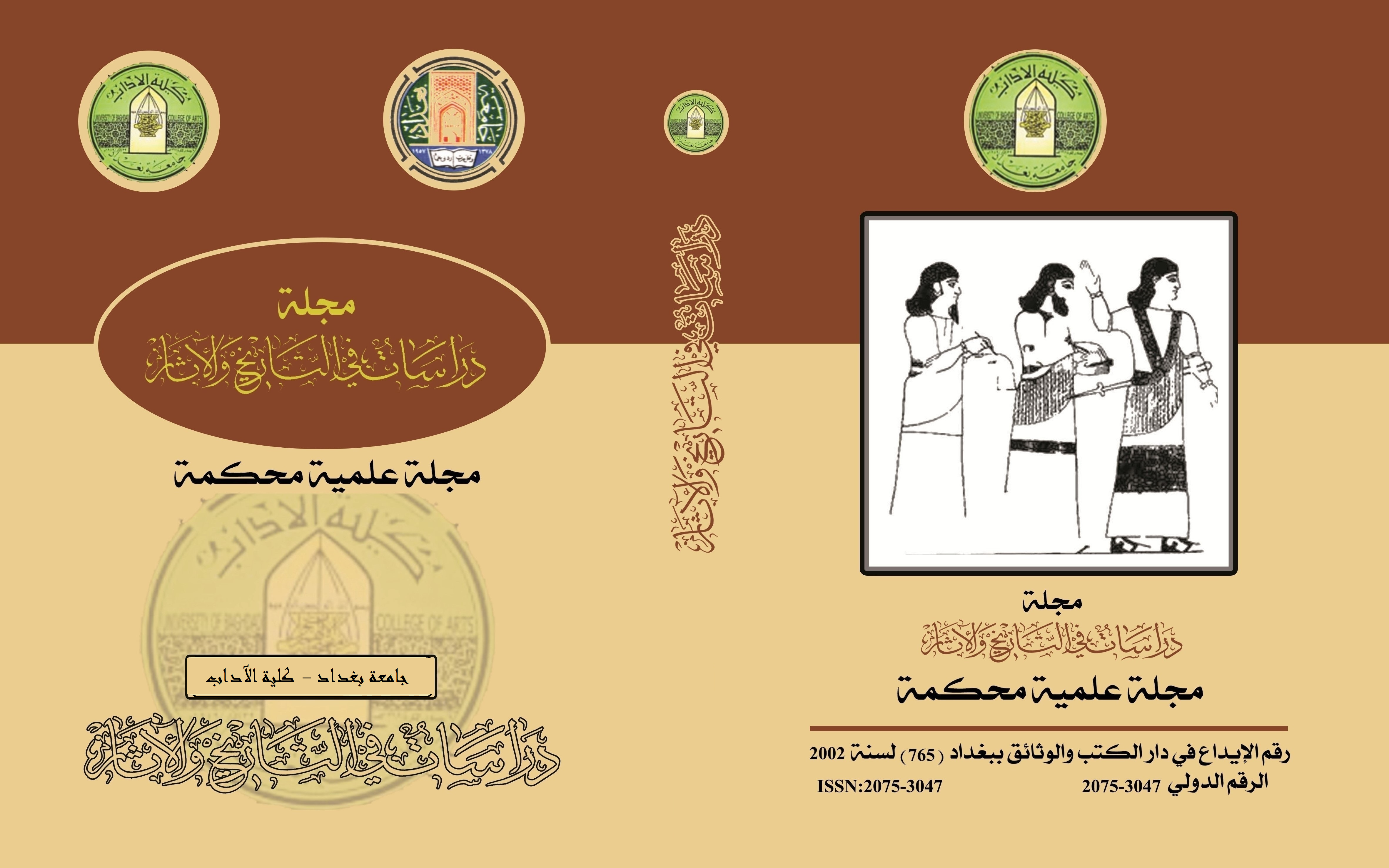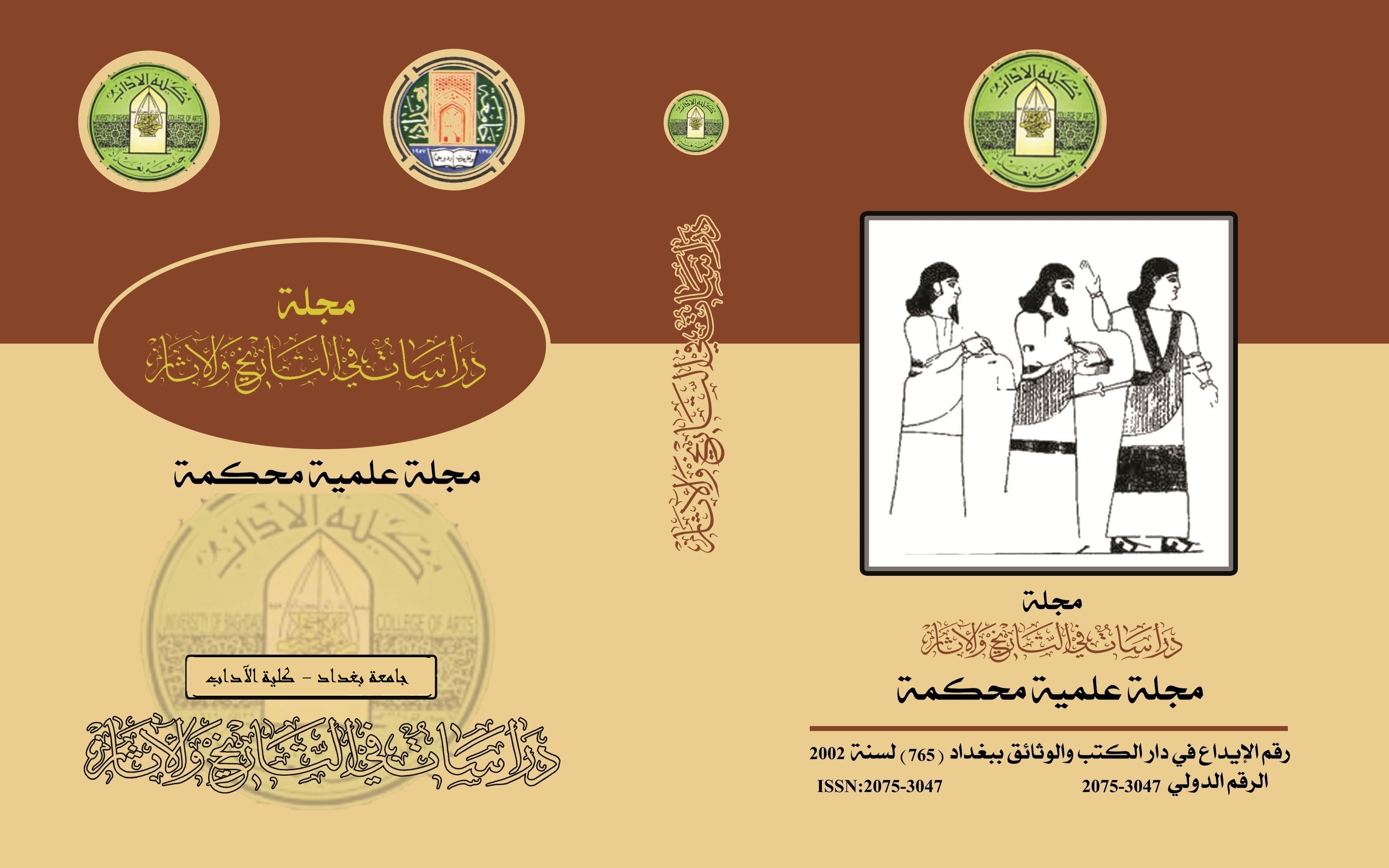دور كبار الموظفين في كتابة تاريخ مصر القديمة ( 1580 -1085ق.م)
DOI:
https://doi.org/10.65074/afap2a37الكلمات المفتاحية:
القادة العسكريين - الموظفين المدنيين – الكتابات التاريخيةالملخص
يتضمن هذا البحث دراسة لأبرز الشخصيات من موظفي الدولة الكبار الذين اسهموا في كتابة التاريخ السياسي بما تركوه من كتابات دونوا بها سير حياتهم واعمالهم التي كلفوا بها وانجزوها خدمة لملوك مصر وأهلها جميعا ، ومن ثم جاءت تلك الكتابات لاجل تخليد ذكراهم للأجيال اللاحقة ،لانهم لم يوثقوا سيرت حياتهم فقط ، بل وثقوا الاحداث التاريخية التي حدثت اثناء عملهم ، وهنا تكمن أهمية كتاباتهم التاريخية .
وطالما إن المهام التي قام بها الموظفون جاءت بتكليف من الملوك فأنها تحسب ضمناً للملك الذي خدم في عهده هذا الموظف او ذاك، وهنا تكمن أهمية كتاباتهم التاريخية، علما إن كتاباتهم جاءت مدونة بشكل رئيسي على جدران مقابرهم المنتشرة في مناطق مختلفة من مصر، والتي يأتي على رأسها طيبة
وفضلاً عن المقابر تأتي المدونات على الاثار المنقولة للموظفين والتي تشمل اللوحات ، التماثيل، التوابيت، المومياءات ، وعلى العموم فإن الاثار المنقولة لم تحتوي على كتابات تاريخية مهمة .
المراجع
( ) Bill Petty, Ahmose An Egyptian Soldier’s Story ,( United States of America : Museum Tours Press Littleton, Colorado, 2014),p150.
( ) لالويت ، طيبة او نشأة الإمبراطورية ت: ماهر جويجاتي، (القاهرة: المجلس الأعلى للثقافة، 2005)، ص 153؛عبد البصير، حسين، اسرار الملوك والملكات في مصر القديمة، ( القاهرة : دار داوين ، 2022)، ص 123.
( ) أمين ، امينة محمود ، أثار الموظفين منذ بداية عهد الملك احمس الأول حتى نهاية عهد الملك تحتمس الثاني " دراسة أثرية حضارية " ، أطروحة دكتوراه غير منشورة ، قسم الاثار المصرية ، ( طنطا : جامعة طنطا ، 2016)، ص 473.
( ) برستد، جيمس هنري برستد، سجلات تاريخية من مصر القديمة ،ت: احمد محمود،( القاهرة : مكتبة سنابل ، 2009 )، ج 2 ، ص 9.
( ) افاريس : تقع شرق الدلتا ، تأسست سنة 1640 ق.م ، اتخذ منها الهكسوس عاصمة لهم لقربها من نهر النيل ، وتعرف اليوم ب ( تل الضبعة ). ينظر: الانصاري، ناصر، قادة مصر الفرعونية، احمس، ( القاهرة: دار الياس المصرية للطباعة والنشر ، 2008) ، ص 19؛
Brett H. Heagren ,The Art of War Pharanic Egypt , An Analysis of the Tactical, Logistic, and Operational Capabilities of the Egyptian Army(Dynasties XVII-XX), A thesis Doctor of Philosophy in Ancient History ( New Zealand :University of Auckland,2010, p 116.
( ) عثمان، ايمان عبد الفتاح حسن ، المعارك الحربية في مصر القديمة حتى نهاية العصر اليوناني الروماني دراسة تاريخية سياحية ، أطروحة دكتوره غير منشورة،( جامعة الإسكندرية : كلية السياحة والفنادق ، 2012) ، ص 72.
( ) نور الدين ،عبد الحليم ، كفاح شعب مصر ضد الهكسوس وعودة الروح،( القاهرة: دار الفكر العربي، 2008 ) ، ص 42.
( ) شاروحين (شاروهين): مدينة كنعانية تقع جنوب فلسطين، حيث كانت موطن الهكسوس التي تحصنوا بها اثناء تراجعهم من مصر، والتي ضرب عليها احمس الأول الحصار لعدة سنوات ينظر: ، أبو بكر، عبد المنعم ، لمحات من التاريخ المصري القديم ،( القاهرة : وكالة الصحافة العربية ،2022 ) ، ص 138؛
. Heagren ,The Art of War Pharanic Egypt… , p 117
( ) عثمان ، المعارك الحربية في مصر القديمة .... ، ص72.
( ) لالويت ،طيبة او نشأة الامبراطورية،ص ص 156-157؛ السيد، افتكار البنداري ، نكبة توطين الهكسوس، ( القاهرة : د.م ، 2020) ، ج1 ، ص 87 .
( ) Petty, Ahmose An Egyptian Soldier’s Story, p102.
( ) لالويت ، طيبة او نشأة الامبراطورية ، ص 157 ؛
Petty, Ahmose An Egyptian Soldier’s Story, p102.
( ) خنت-إن - نفر: تقع بعد الجندل الثاني في بلاد النوبة استولى عليها من اجل القضاء على القبائل الصحراوية الذين اطلق عليهم " أيونتيو – ستيو " والتي تعني حرفياً ( حملة الاقواس من النوبيين ) وتمكن من القضاء على اغلبهم ، والسبب الذي دعى احمس الأول الانطلاق من الجندل الثاني، كون منطقة بوهن كانت تحت السيطرة المصرية الامر الذي دعاه الى الانطلاق من خنت – إن – نفر من اجل استعادة السيطرة على جزيرة صاي . ينظر : طبو زادة زكية يوسف ، تاريخ مصر من افول الدولة الوسطى الى نهاية الاسرات ،( القاهرة : د.ط ، 2008) ، ص ص 42- 43.
( ) لالويت ، طيبة او نشأة الامبراطورية ، ص 157 .
( ) Petty, Ahmose An Egyptian Soldier’s Story, p102.
التنزيلات
منشور
إصدار
القسم
الرخصة

هذا العمل مرخص بموجب Creative Commons Attribution 4.0 International License.
:حقوق الطبع والنشر والترخيص
بالنسبة لجميع البحوث المنشورة في مجلة دراسات في التاريخ والآثار، يحتفظ الباحثون بحقوق النشر. يتم ترخيص البحوث بموجب ترخيص Creative Commons CC BY 4.0 المفتوح ، مما يعني أنه يجوز لأي شخص تنزيل البحث وقراءته مجانًا. بالإضافة إلى ذلك ، يجوز إعادة استخدام البحث واقتباسه شريطة أن يتم الاستشهاد المصدر المنشور الأصلي. تتيح هذه الشروط الاستخدام الأقصى لعمل الباحث وعرضه.
:إعادة إنتاج البحوث المنشورة من الناشرين الآخرين
من الضروري للغاية أن يحصل الباحثون على إذن لإعادة إنتاج أي بحث منشورة (أشكال أو مخططات أو جداول أو أي مقتطفات من نص) لا يدخل في نطاق الملكية العامة أو لا يملكون حقوق نشرها. يجب أن يطلب الباحثون إذنًا من مؤلف حقوق النشر (عادة ما يكون الناشر).
يطلب الإذن في الحالات التالية:
بحوثك الخاصة المنشورة من قِبل ناشرين آخرين ولم تحتفظ بحقوق النشر الخاصة بها.
مقتطفات كبيرة من بحوث أي شخص أو سلسلة من البحوث المنشورة.
استخدم الجداول والرسوم البيانية والمخططات والمخططات والأعمال الفنية إذا لم يتم التعديل عليها.
الصور الفوتوغرافية التي لا تملك حقوق لنشرها.
لا يطلب الإذن في الحالات التالية:
إعادة بناء الجدول الخاص بك مع البيانات المنشورة بالفعل في مكان آخر. يرجى ملاحظة أنه في هذه الحالة يجب عليك ذكر مصدر البيانات في شكل "بيانات من ..." أو "مقتبس من ...".
تعتبر عروض الأسعار القصيرة معقولة الاستخدام العادل ، وبالتالي لا تتطلب إذنًا.
الرسوم البيانية ، الرسوم البيانية ، المخططات ، الأعمال الفنية التي أعاد الباحث رسمها بالكامل والتي تم تغييرها بشكل ملحوظ إلى درجة لا تتطلب الاعتراف.
الحصول على إذن
لتجنب التأخير غير الضروري في عملية النشر ، يجب أن تبدأ في الحصول على أذونات في أقرب وقت ممكن. لا يمكن لمجلة الآداب نشر بحث مقتبس من منشورات أخرى دون إذن.
قد يمنحك مالك حقوق الطبع والنشر تعليمات بشأن شكل الإقرار الواجب اتباعه لتوثيق عمله ؛ بخلاف ذلك ، اتبع النمط: "مستنسخ بإذن من [المؤلف] ، [كتاب / المجلة] ؛ نشره [الناشر] ، [السنة]." في نهاية شرح الجدول ، الشكل أو المخطط.



















